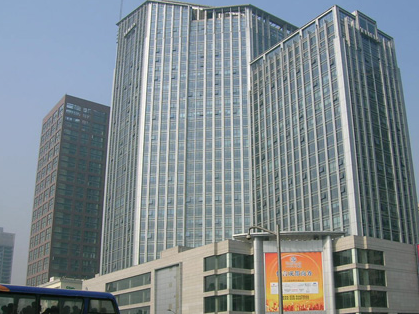
 注册领资料
注册领资料

 注册领资料
注册领资料

Where does the water in a lake come from, and how does water leave it? Water enters a lake from inflowing rivers, from underwater seeps and springs, from overland flow off the surrounding land, and from rain falling directly on the lake surface. Water leaves a lake via outflowing rivers, by soaking into the bed of the lake, and by evaporation. So muchis obvious.
The questions become more complicated when actual volumes of water are considered: how much water enters and leaves by each route? Discovering the inputs and outputs of rivers is a matter of measuring the discharges of every inflowing and outflowing stream and river. Then exchanges with the atmosphere are calculated by finding the difference between the gains from rain, as measured (rather roughly) by rain gauges, and the losses by evaporation, measured with models that correct for the other sources of water loss. For the majority of lakes, certainly those surrounded by forests, input from overland flow is too small to have a noticeable effect. Changes in lake level not explained by river flows plus exchanges with the atmosphere must be due to the net difference between what seeps into the lake from the groundwater and what leaks into the groundwater. Note the word "net": measuring the actual amounts of groundwater seepage into the lake and out of the lake is a much more complicated matter than merely inferring their difference.
Once all this information has been gathered, it becomes possible to judge whether a lake’s flow is mainly due to its surface inputs and outputs or to its underground inputs and outputs. If the former are greater, the lake is a surface-water-dominated lake; if the latter, it is a seepage-dominated lake. Occasionally, common sense tells you which of these two possibilities applies. For example, a pond in hilly country that maintains a steady water level all through a dry summer in spite of having no streams flowing into it must obviously be seepage dominated. Conversely, a pond with a stream flowing in one end and out the other, which dries up when the stream dries up, is clearly surface water dominated.
By whatever means, a lake is constantly gaining water and losing water: its water does not just sit there, or, anyway, not for long. This raises the matter of a lake’s residence time. The residence time is the average length of time that any particular molecule of water remains in the lake, and it is calculated by dividing the volume of water in the lake by the rate at which water leaves the lake. The residence time is an average; the time spent in the lake by a given molecule (if we could follow its fate) would depend on the route it took: it might flow through as part of the fastest, most direct current, or it might circle in a backwater for an indefinitely long time.
Residence times vary enormously. They range from a few days for small lakes up to several hundred years for large ones; Lake Tahoe, in California, has a residence time of 700 years. The residence times for the Great Lakes of North America, namely, Lakes Superior, Michigan, Huron, Erie, and Ontario, are, respectively, 190,100,22,2.5, and 6 years. Lake Erie’s is the lowest: although its area is larger than Lake Ontario’ s, its volume is less than one-third as great because it is so shallow-less than 20 meters on average.
A given lake’s residence time is by no means a fixed quantity. It depends on the rate at which water enters the lake, and that depends on the rainfall and the evaporation rate. Climatic change (the result of global warming?) is dramatically affecting the residence times of some lakes in northwestern Ontario, Canada. In the period 1970 to 1986, rainfall in the area decreased from 1,000 millimeters to 650 millimeters per annum, while above-average temperatures speeded up the evapotranspiration rate (the rate at which water is lost to the atmosphere through evaporation and the processes of plant life).
The result has been that the residence time of one of the lakes increased from 5 to 18 years during the study period. The slowing down of water renewal leads to a chain of further consequences; it causes dissolved chemicals to become increasingly concentrated, and this, in turn, has a marked effect on all living things in the lake.
1. The phrase so much in the passage refers to
A the negative effects of overland flow, rain, and evaporation on river water levels.
B water that a lake loses to outflowing rivers, to the lake bed, and to evaporation.
C the importance of rivers to the maintenance of lake water levels.
D the information given about ways that water can enter or exit a lake.
2. The word gains in the passage is closest in meaning to
A results.
B increases.
C resources.
D savings.
3. Which of the following can be inferred from paragraph 2 about the movement of water into a lake?
A Heavy rain accounts for most of the water that enters into lakes.
B Rainfall replaces approximately the amount of water lost through evaporation.
C Overland flow into lakes is reduced by the presence of forests.
D Seepage has a smaller effect on water level than any other input.
4. Why does the author use the phraseNote the word "net" in the passage?
A To emphasize the impact of seepage on water levels.
B To point out that seepage is calculated differently from river flows and atmospheric exchanges.
C To compare the different methods of calculating seepage.
D To emphasize the difficulty of obtaining specific values for seepage inputs and outputs.
5. The word Conversely meaning to
A on the other hand.
B in the same way.
C in other words.
D on average.
6. According to paragraph 3, which of the following best describes a seepage-dominated lake?
A A lake that is fed by streams but still has fluctuating water levels.
B A lake with a constant water level that has no streams or rivers as inputs.
C A lake with a stream flowing into it and a stream flowing out of it.
D A lake that has surface and underground inputs but loses water during dry seasons.
7. It can be inferred from paragraph 4 that the length of time a given molecule of water remains in a lake
A depends entirely upon the average speed of a lake' s currents.
B can be measured by the volume of the lake alone.
C can be greater or lesser than the residence time.
D is similar to the length of time all other molecules remain in that lake.
8. According to paragraph 5, Lake Erie's residence time is lower than Lake Ontario's for which of the following reasons?
A Lake Erie has a larger area than Lake Ontario.
B Lake Ontario is shallower than Lake Erie.
C Lake Ontario has a greater volume than Lake Erie.
D Lake Erie receives less rainfall than Lake Ontario.
9. Why does the author discuss the Great Lakes in paragraph 5?
A To demonstrate the extent to which residence times vary from lake to lake.
B To illustrate how residence times are calculated for specific lakes.
C To argue that the residence time of a lake increases with area.
D To emphasize that Lake Tahoe' s residence time is unusually long.
10. The word further in the passage is closest in meaning to
A expected.
B additional.
C serious.
D unfortunate.

申友留学APP





上海(总部)服务中心
地址:上海市徐汇区文定路218号德必徐家汇WE艺术湾B座207

北京服务中心
地址:北京市朝阳区雅宝路7号 E园EPARK大厦4楼

广州服务中心
地址:广州天河区华穗路406号保利克洛维中景大厦B座2407室

武汉服务中心
地址:武汉市珞喻路889号光谷融众国际写字楼23层2302室

成都服务中心
地址:四川省成都市锦江区春熙路街道梓潼桥正街25号西部文化产业中心8楼

杭州服务中心
地址:杭州市江干区江锦路159号 平安金融中心B座9楼

重庆服务中心
地址:重庆市渝中区邹容路68号大都会广场16楼1603-1604室

深圳服务中心
地址:深圳市南山区玉泉路116号融创毅哲大厦

青岛服务中心
地址:青岛市市南区南京路8号 府都大厦909室

我的留学方案